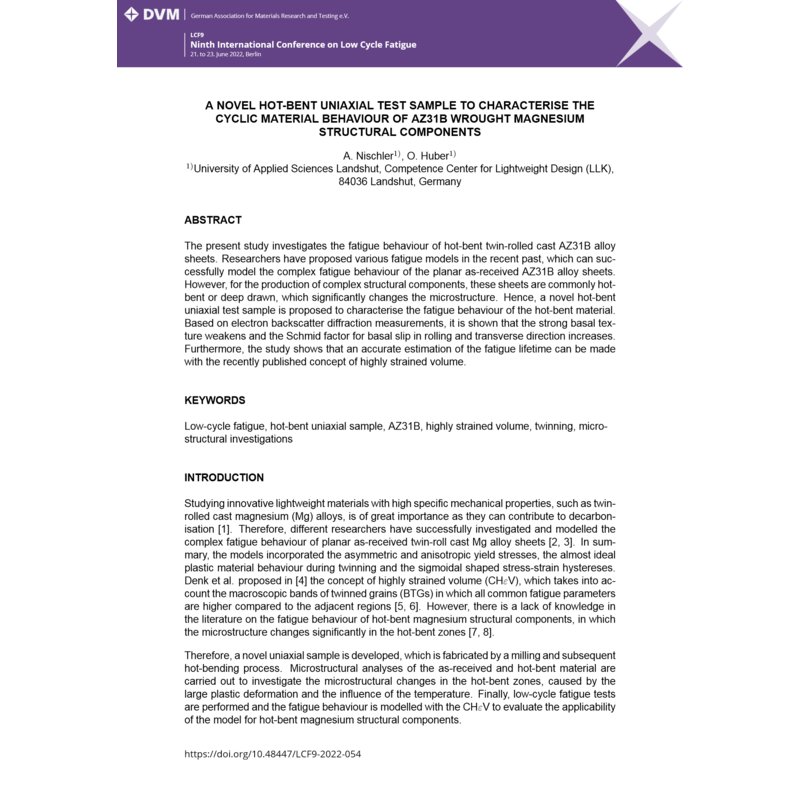- Online only



To reduce CO2 emissions, innovative lightweight materials such as twin rolled cast magnesium alloys will become considerably more important in the future. However, the use of such lightweight structures, e.g. in the automotive industry, requires good knowledge of fatigue behavior and its modeling.
Through the manufacturing process of magnesium wrought alloys, a strong basal texture develops. Compressive stress perpendicular or tensile stress parallel to the c-axis of the hexagonal lattice activates primarily {10-12} tension twins as the main plastic deformation mechanism. The basal texture, twinning and detwinning lead to asymmetric and anisotropic yield strengths, to ideal plastic material behavior during twin formation and sigmoidal shaped stress-strain hystereses.…

Datenschutzbedingungen (bearbeiten im Modul "Kundenvorteile")

Lieferbedingungen (bearbeiten im Modul "Kundenvorteile")

Rücksendebedingungen (bearbeiten im Modul "Kundenvorteile")
To reduce CO2 emissions, innovative lightweight materials such as twin rolled cast magnesium alloys will become considerably more important in the future. However, the use of such lightweight structures, e.g. in the automotive industry, requires good knowledge of fatigue behavior and its modeling.
Through the manufacturing process of magnesium wrought alloys, a strong basal texture develops. Compressive stress perpendicular or tensile stress parallel to the c-axis of the hexagonal lattice activates primarily {10-12} tension twins as the main plastic deformation mechanism. The basal texture, twinning and detwinning lead to asymmetric and anisotropic yield strengths, to ideal plastic material behavior during twin formation and sigmoidal shaped stress-strain hystereses. In addition, macroscopic bands of twinned grains (BTGs) are formed, in which the compressive strain is larger than in the adjacent regions of the BTGs, resulting in a discontinuous strain field. In the recent past, fatigue modeling considering the mentioned aspects have been successfully performed on planar twin-roll-cast magnesium sheets. However, investigations on the fatigue behavior of hot-bent magnesium structures, where the microstructure of the material changes significantly in the forming zones, are still lacking.
Therefore, a novel uniaxial specimen is developed to investigate the influence of the microstructural changes caused by the large plastic deformation and the heat influx during the hot-bending process on the low cycle fatigue behavior. The geometry of the hot-bent uniaxial specimen ensures an almost homogeneous uniaxial stress state in the gauge length. Specimens with different forming temperatures, forming feed rates and orientations of the rolling direction are examined. Microstructural analyses with optical microscopy, scanning electron microscopy and electron backscatter diffraction show that dynamic recrystallization occurs and the strong basal texture persists after the hot-bending process. For fatigue modeling, the recently proposed highly strained volume is used. Therefore, in-situ strain field measurements are made during the fatigue tests to evaluate local fatigue parameters in the BTGs. The fatigue tests reveal that the first macroscopic crack always starts within the BTGs and that the forming process can enhance the fatigue properties of AZ31B magnesium alloy.